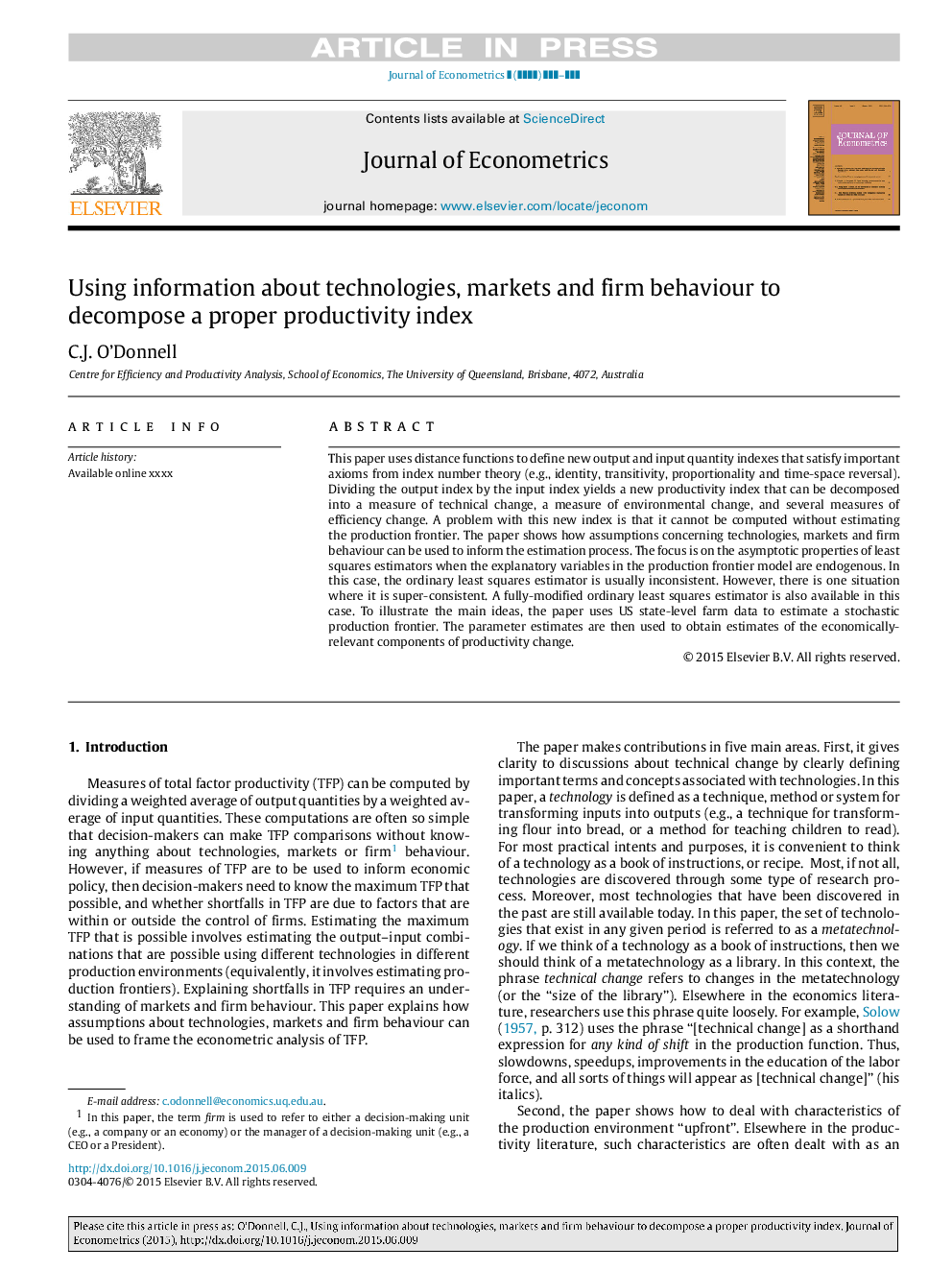| Article ID | Journal | Published Year | Pages | File Type |
|---|---|---|---|---|
| 5095580 | Journal of Econometrics | 2016 | 13 Pages |
Abstract
This paper uses distance functions to define new output and input quantity indexes that satisfy important axioms from index number theory (e.g., identity, transitivity, proportionality and time-space reversal). Dividing the output index by the input index yields a new productivity index that can be decomposed into a measure of technical change, a measure of environmental change, and several measures of efficiency change. A problem with this new index is that it cannot be computed without estimating the production frontier. The paper shows how assumptions concerning technologies, markets and firm behaviour can be used to inform the estimation process. The focus is on the asymptotic properties of least squares estimators when the explanatory variables in the production frontier model are endogenous. In this case, the ordinary least squares estimator is usually inconsistent. However, there is one situation where it is super-consistent. A fully-modified ordinary least squares estimator is also available in this case. To illustrate the main ideas, the paper uses US state-level farm data to estimate a stochastic production frontier. The parameter estimates are then used to obtain estimates of the economically-relevant components of productivity change.
Related Topics
Physical Sciences and Engineering
Mathematics
Statistics and Probability
Authors
C.J. O'Donnell,
